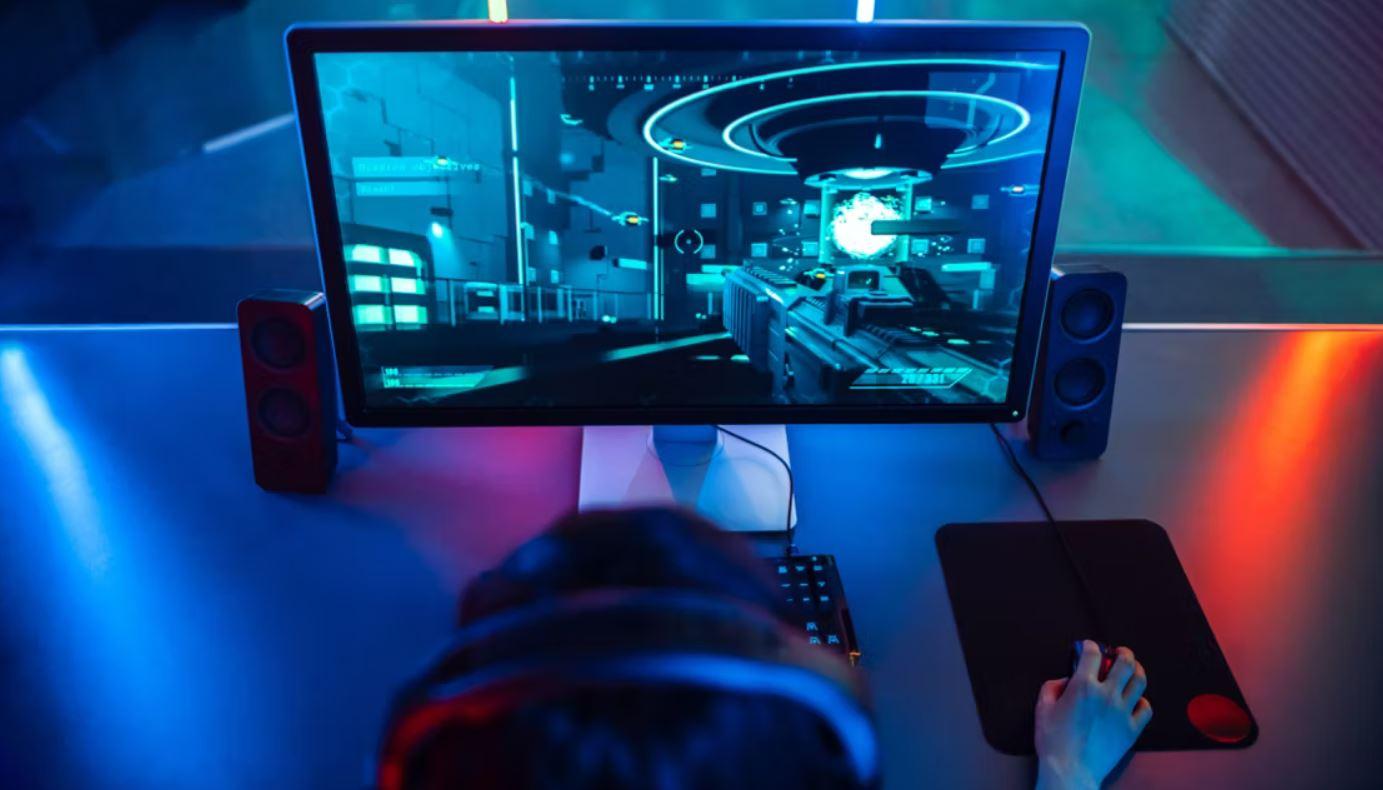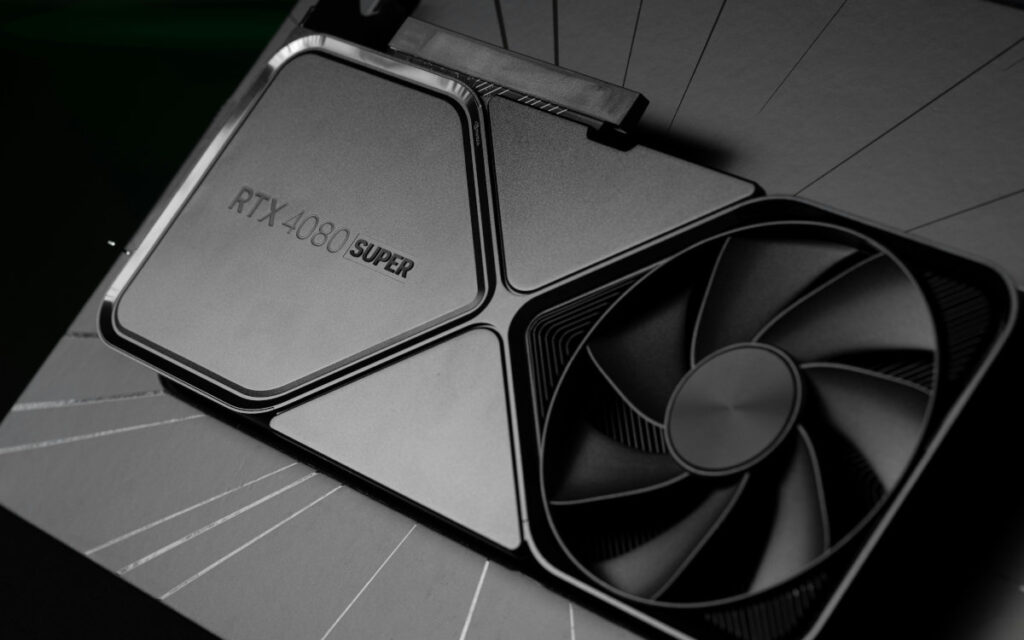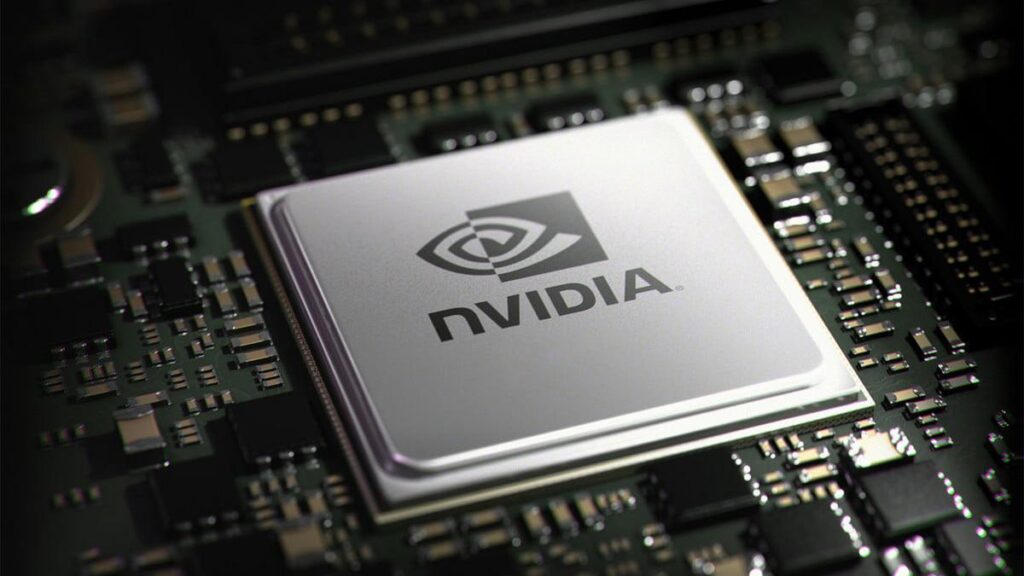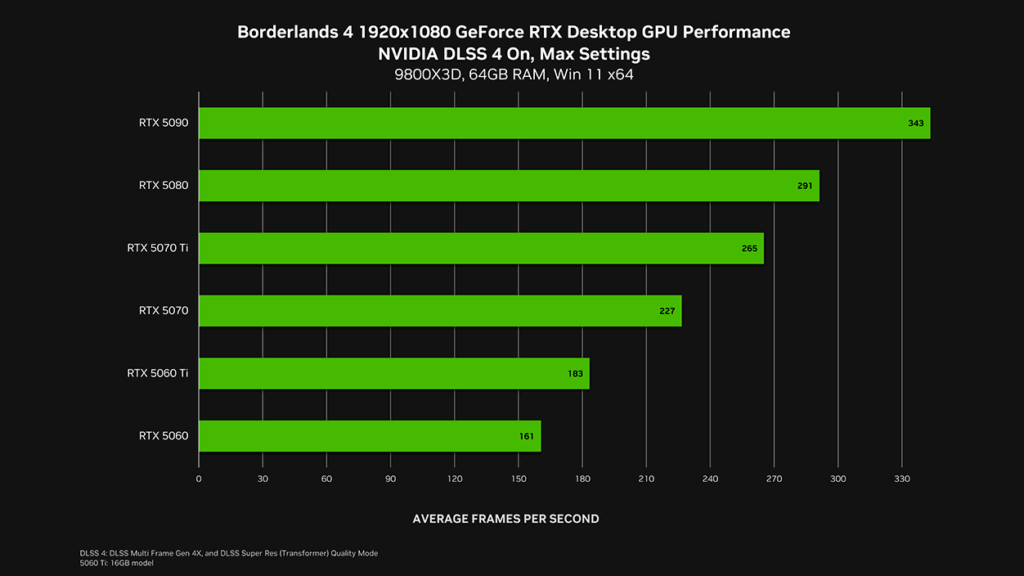- Resizable BAR improves CPU access to VRAM and typically raises minimums by 1%.
- NVIDIA enables it via a validated list; forcing it globally can cause problems
- HAGS reduces CPU load, but its impact depends on the game and drivers.
- Update BIOS/VBIOS/drivers and A/B test to decide by game

In recent years, two performance levers have generated a lot of discussion among gamers and PC enthusiasts: Hardware-Accelerated GPU Scheduling (HAGS) and Resizable BAR (ReBAR)Both promise to squeeze every last drop of performance out of every frame, improve smoothness, and, in certain scenarios, reduce latency, but it's not always wise to enable them blindly. Here we've compiled what we've seen in tests, guides, and community discussions so you can make an informed decision about when it's worth tweaking them.
The spotlight is especially on Resizable BAR on NVIDIA cardsAlthough the company has supported it for generations, it doesn't enable it by default in all games. The reason is simple: not all titles perform better, and in some, FPS may even drop. Even so, there are practical examples and benchmarks where manually enabling ReBAR—even globally with advanced tools—produces noticeable gains of at least 1% in popular synthetic benchmarks. Let's learn all about it. HAGS and Resizable BAR: when to activate them.
What are HAGS and Resizable BAR and why do they matter?

HAGS, or hardware-accelerated GPU programmingIt shifts part of the graphics queue management from the CPU to the GPU itself, reducing processor overhead and potentially latency. Its actual impact depends on the game, drivers, and Windows version, so some systems experience a noticeable improvement. others where hardly anything changes or it even reduces stability.
ReBAR, for its part, enables a PCI Express feature that allows the CPU to access all the GPU VRAM instead of being limited to 256MB windows. This can speed up data movements such as textures and shaders, resulting in better minimums and more consistency when the scene changes rapidly—something especially useful in open worlds, driving and action.
How Resizable BAR works at a technical level
Without ReBAR, transfers between CPU and VRAM are performed through a fixed buffer of 256 MBWhen the game needs more processing power, multiple iterations are chained together, introducing additional queues and latency under heavy load. With ReBAR, that size becomes resizable, allowing for the creation of... larger and parallel windows to move large blocks of data more efficiently.
In a standard PCIe 4.0 x16 link, the bandwidth is around 31,5 GB / sMaking better use of that pipeline avoids bottlenecks during periods of heavy resource streaming. In practice, a GPU with a lot of VRAM can transfer data with less fragmentation, and the CPU manages more work concurrently, instead of putting everything in the queue.
Compatibility, requirements, and support status at NVIDIA and AMD

ReBAR has existed in the PCIe specification for some time, but its deployment in consumer applications gained momentum after... AMD will popularize Smart Access Memory (SAM) in the Ryzen 5000 and Radeon RX 6000 series. NVIDIA adopted the same technical foundation (simply calling it Resizable BAR) and promised to activate it for the family GeForce RTX 30.
NVIDIA complied by integrating support into drivers and VBIOS, although per-game activation remains conditional on validated listsSpecifically, the GeForce RTX 3060 was released with VBIOS compatibility; it was necessary for the 3090, 3080, 3070, and 3060 Ti. update the VBIOS (Founders Edition from the NVIDIA website, and assembler models from each manufacturer's website). Additionally, the following is required GeForce driver 465.89 WHQL or higher.
On the processor and motherboard side, a Compatible CPU and a BIOS that enables ReBAR. NVIDIA confirmed support with AMD Ryzen 5000 (Zen 3) and 10th and 11th generation Intel Core processors. Supported chipsets include AMD 400/500 series motherboards (with a suitable BIOS) and, for Intel, Z490, H470, B460, and H410, as well as the 500 series family. Activate “Above 4G Decoding” and “Re-Size BAR Support” It is usually essential in the BIOS.
If you use AMD at the CPU+GPU level, SAM operates with a broader approach and can act about all the gamesWith NVIDIA, support is limited to titles verified by the company, although it can be manually forced with advanced tools, assuming the associated risks.
List of verified games and where the benefit is seen
According to NVIDIA, the impact could reach up to 12% on certain securities Under specific conditions. The company maintains a list of validated games, which includes:
- Assassin's Creed Valhalla
- Battlefield V
- Borderlands 3
- Control
- Cyberpunk 2077
- Death Stranding
- DIRT 5
- F1 2020
- Forza Horizon 4
- Gears 5
- Godfall
- Hitman 2
- Hitman 3
- Horizon Zero Dawn
- Metro Exodus
- Red Dead Redemption 2
- Watch Dogs: Legion
However, real-world results are usually more modest on averageIndependent analyses have estimated the improvement at around 3–4% for supported games, with increases of 1–2% for unvalidated titles. Even so, ReBAR truly shines in... improving on the lows of 1% and 0,1%smoothing out jerks and load peaks.
Activate it globally or per game? What the community says
A portion of the enthusiastic community has tried activating ReBAR globally with NVIDIA Profile InspectorThe logic is clear: if the minimum usage is rising by 1% in many modern titles, why not leave it always on? The reality is that some older or poorly optimized games They may lose performance or exhibit unusual behavior, which is why NVIDIA maintains its whitelist approach.
In 2025, even with recent GPUs like the Blackwell 5000 series already on the market, it's not uncommon to see discussions and home benchmarks reporting noticeable improvements when pushing the system globally. Several users are reporting increases in... 10–15 FPS in specific scenarios and, above all, a clear push at the lows. But there are also warnings circulating about possible instabilities (crashes, blue screens) if the system configuration is not perfectly up to date.
The JayzTwoCents case: Port Royal and free points on synthetics
A frequently cited example comes from creator JayzTwoCents' tests with an Intel Core i9-14900KS system and a GeForce RTX 5090During a tuning session to compete in benchmarks against LTT Labs and the overclocker Splave, he detected that his system performed worse than one with Ryzen 7 9800X3DAfter consulting, he confirmed that many enthusiasts Enable ReBAR in the controller to get the most out of it, especially on Intel platforms.
By activating ReBAR, its score in 3DMark Port Royal increased from 37.105 to 40.409 points (approximately 3.304 extra points, or about 10%). This is a prime example of how this characteristic can translate into competitive advantage in synthetic environments, although it is worth remembering that the benefits in real games depend on the title and its memory access pattern.
Quick guide: Activating ReBAR and HAGS wisely
For ReBAR, the logical order is: BIOS updated with Re-Size BAR Support and “Above 4G Decoding” enabled; VBIOS compatible on the GPU (if applicable); and drivers up to date (On NVIDIA, starting at 465.89 WHQL). If everything is correct, the NVIDIA control panel should indicate that ReBAR is active. On AMD, SAM is managed from BIOS/Adrenalin on supported platforms.
With HAGS, activation is done in Windows (Advanced Graphics Settings) provided the GPU and drivers support the feature. It's a latency toggle that can benefit certain combinations of game + operating system + driversBut it's not miraculous. If after activating it you notice stuttering, crashes, or performance loss, Deactivate it and compare.
When is it appropriate to activate HAGS and ReBAR?
You might be interested in trying HAGS if you play latency-sensitive competitive titles or if your CPU is nearing its limit in some games, as the GPU scheduler can alleviate some latency issues. bottlenecks in specific contextsHowever, if you use capture software, aggressive overlays, or VR, it's a good idea to validate game by game because some environments are more... fussy about HAGS.
ReBAR is worth trying if your PC meets the requirements and you play modern titles with heavy data streaming. On NVIDIA, the ideal setup is... activate it in verified games And, if you're an advanced user, evaluate the global mode with Profile Inspector at your own risk. Practical recommendation: benchmarks A/B in your usual games, paying attention to 1% and 0,1% lows, as well as frame time.
Specific compatibilities you should check
On NVIDIA, all the GeForce RTX 3000 (with the exception of VBIOS in 3090/3080/3070/3060 Ti models that required it) and later generations. In AMD, the family Radeon RX 6000 SAM was introduced and expanded to subsequent platforms. On the other side of the socket, Ryzen 5000 (Zen 3) and some Ryzen 3000 processors support ReBAR/SAM, with exceptions such as Ryzen 5 3400G and Ryzen 3 3200G.
At Intel, the 10th and 11th generation Core series enable ReBAR in combination with Z490, H470, B460, H410 chipsets and the 500 series. And remember: your motherboard's BIOS The system must include the necessary support; if you don't see it, you'll need to update according to the manufacturer's instructions. Without this component, the function won't be activated even if the rest of the hardware is compatible.
Real profits: what the tests say
NVIDIA's official data states that up 12% in specific titles. In independent measurements, the average is usually around 3–4% in validated games, with more modest increases in the rest. On AMD platforms with SAM, there are reports of averages close to 5% in certain scenarios, with isolated cases above that threshold.
Beyond the average, the key lies in experience: a slight increase in average FPS can be accompanied by a more noticeable jump in minimums of 1% and 0,1%. This improvement in consistency is noticeable as minor stutter when the game loads new areas or when demand spikes occur, which is precisely where ReBAR has the best chance of helping.
Risks, typical problems and how to mitigate them
Forcing ReBAR globally may cause some specific games to crash. performs worse or has flawsThat's why NVIDIA prioritizes enabling it via whitelisting. If you choose the advanced approach with Profile Inspector, document the changes and maintain a profile for each game to quickly revert if a title It experiences crashes or glitches.
In HAGS, the most frequent problems are sporadic stuttering, instability with overlays or recording, and some occasional incompatibility with driversThe recipe is simple: update Windows and drivers, test with and without HAGS, and keep the settings you want. best frame time it offers you in your main games.
What if you compete in benchmarks?

If you overclock and chase records in synthetic benchmarks, enabling ReBAR can give you that. 10% advantage in specific testsas illustrated by the Port Royal case with the RTX 5090. However, don't simply extrapolate to real-world gaming: each engine and workload reacts differently. Therefore, configure your system with separate profiles for bench and for playing.
Typical configurations and winning combinations
In the current ecosystem, you will see three main scenarios: NVIDIA GPU + Intel CPU, NVIDIA GPU + AMD CPUand AMD GPU + AMD CPU (SAM). In the AMD duo, SAM support is extensive by design. With NVIDIA, the sensible approach is to follow the whitelist and, if you have experience, experiment with controlled global enablement. and measurable.
Whatever your combination, the first step is to ensure that your BIOS, VBIOS, and drivers are up to date and that Windows correctly recognizes the ReBAR/HAGS functionWithout that foundation, any performance comparison will lack validity, because you'll be mixing software changes with supposed feature improvements.
Recommended steps to test without surprises
– Update the motherboard BIOS and, if applicable, the GPU VBIOS Following the manufacturer's instructions, check that "Above 4G Decoding" and "Re-Size BAR Support" are enabled.
– Install recent drivers (NVIDIA 465.89 WHQL or higher; for AMD, versions with SAM enabled) and check the panel that ReBAR/SAM appears as active.
– Create a test bench with your usual games: It records average FPS, 1% and 0,1%.and check the frame time. Do A/B tests with and without HAGS; with and without ReBAR; and, if you're using NVIDIA, also with ReBAR per-game vs global.
– If you detect any anomalies, return to mode per-game instead of global and disable HAGS on conflicting titles.
Following these steps will give you a clear picture of whether enabling these features on your device and in your games is worthwhile, which is what really matters. generic averages.
Quick questions that often arise
Do I lose my warranty by modifying ReBAR/HAGS? Not by activating official options in BIOS/Windows and manufacturer drivers. However, use advanced tools to force ReBAR globally It's something you do at your own risk.
Can performance drop? Yes, in some specific games. That's why NVIDIA Don't activate it on all by default and maintain a validated list approach.
Is it worth it if I play older titles? If most of your library consists of older games, the gain will be limited, and there's a risk that some of them will fail. perform worse It increases. In that situation, it's best to leave ReBAR for one game and try HAGS on a case-by-case basis.
What real benefit can we expect? On average, modest increases (3–5%), with larger peaks in specific scenarios and a noticeable improvement in minimumswhich is where the experience feels smoothest.
The decision comes down to testing and measuring on your own setup. If your hardware is compatible, your drivers are up to date, and your games benefit, then enabling HAGS and, above all, resizable BAR It can give you a few extra FPS and smoother, more stable gameplay "for free." However, if you notice instability or worse performance in certain titles, sticking with the game-validated approach and disabling HAGS where it doesn't add value will be the wisest course of action.
Passionate about technology since he was little. I love being up to date in the sector and, above all, communicating it. That is why I have been dedicated to communication on technology and video game websites for many years. You can find me writing about Android, Windows, MacOS, iOS, Nintendo or any other related topic that comes to mind.
